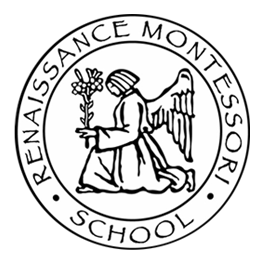“The exercises of Practical Life are formative activities, a work of adaptation to the environment. Such adaptation to the environment and efficient functioning therein is the very essence of a useful education.” - Maria Montessori
Practical Life Exercises
The exercises of Practical Life in the Montessori classroom help to lay the foundation for work done during a child’s experience in the primary classroom. The main areas of Practical Life include care of the environment (indoors and outdoors), care of the person, grace and courtesy and the control of movement. It is the process rather than the emphasis on the finished product that allows a child to work for the sake of joy rather than the end result. Through these exercises the child is presented many opportunities.
Independence
The dressing frames assist the child in becoming independent dressing himself. The children enjoy seeing the button slip through the button hole on the button frame or hearing the snap when it is positioned correctly to make contact. The various pouring exercises help the child develop control of movement so she can successfully pour juice or milk. Child size cleaning materials are within reach should there be a spill!
Focus and concentration
It is not uncommon to see a child working intently and be oblivious to work being done around him. An older child may be working with multiplication and a younger child scrubbing the table close by. Concentration is the result of inner growth. It can be developed by the exercises of Practical Life and other work in the classroom giving the chance for a lengthened cycle of work.
Completion of a task
The exercises of Practical Life range from simple to complex. Some of the exercises have numerous steps. Table washing, for example, involves many different processes and has several items to lay out in order. These assist the child in developing perseverance and follow –through, while experiencing a pattern having a beginning, middle and end. Sometimes as adults, we do not realize how many steps there may in an activity we do routinely such as tying a bow. The Practical Life exercises prepare a child to successfully carry a puzzle map, to carry a movable alphabet box level so the letters remain ordered, to place small beads in position as they determine the answers for multiplication, to successfully place number tickets next to beads while working with squaring and cubing chains and so on. The more advanced exercises require a longer period of time to complete and the Practical Life exercises lay the groundwork.
Mutual Aid and Cooperation
The children in the Montessori classroom have the opportunity to help each other. Some of the children are wonderful teachers. In our multi-age setting it is possible for an older child to help a younger child. This can help the older child strengthen his experience of that piece of work and feel comfortable being a leader. The younger child begins to trust and respect his older friend-the cycle continues. We see many examples of a child comforting another child who may have tripped on the playground or tying the shoe of a friend or even untying the shoe so he can practice tying over and over.
Respect for the environment
The children feel a sense of pride and love for their environment. They enjoy caring for plants, polishing the material, dusting the shelves, folding the classroom laundry and washing the lunch plates. The list is long! Out of these experiences the children form a sense of care and concern.
Indirect preparation for later academic work
Even in water pouring exercises, mathematical concepts are explored. The young child estimates how much water the glass will hold while pouring from a pitcher. The folding cloths are folded into geometric shapes. The hand is indirectly prepared for writing with circular movements involved while scrubbing a table or polishing a piece of silver. Many exercises involve placing pieces from left to right and top to bottom sequencing, an indirect preparation for reading.
As adults we use skills of daily living constantly at a different level. The children enjoy being included in the day to day activities in their homes.









